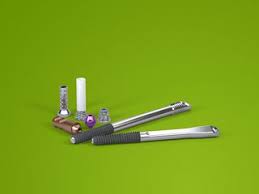Zygoma Implant Price
Zygoma Implant Price : Zygoma implant treatment, also called cheekbone treatment, is a suitable treatment for patients who do not have an upper jawbone. For patients who do not have an upper jaw bone and therefore cannot be implanted, an implant is applied to the zygoma. People with advanced bone loss have edentulous maxilla and therefore surgical or prosthetic treatments become very difficult. In this sense, if only conventional implants are to be used for patients with melted upper jawbone, it may be necessary to apply bone grafts without implanting the implanted part.
This application is an application that includes the elevation of the sinus floor and the formation of bone grafts. Important considerations for zygoma implant treatment are long treatment time, costs, and potential complications. For these reasons, the patient may avoid zygoma treatment.
How is Zygoma Implant Treated?
For treatment, zygomatic implant surgery is performed under deep sedation or general anesthesia. First, the cut gums are sutured to place the zygoma implants. In the upper prosthesis, the parts where the implants are applied are loosened and tissue pomades are placed inside the prosthesis. Thanks to this application, patients can use their old prostheses during the six-month recovery period. In the second step, the implants are connected to each other with the help of a metal bar and measurements are taken from the soft tissues four to six months after this connection.
The measurements taken are necessary for the construction of the prosthesis. An appropriate recovery period is followed in the prosthesis construction, and the final measurements are taken approximately three to four weeks later. Implants are prepared as in fixed bridge construction, and laboratory procedures begin. After the laboratory procedures, tooth rehearsals are made and the patient approves the prosthesis aesthetically.
Zygoma implant treatment is generally successful between 82% and 100%. Accordingly, it has been proven that zygoma implant treatment can be successfully applied in patients with excessive maxillary bone loss and upper jaw loss as a result of tumor operation.
The most important complication that may occur in the treatment after the treatment is done and the prosthesis is placed is the loss of the implants. Although rare, this situation is observed in some patients. For this, the treatment plan should be made well and then the healing process should be overcome well. In the loss of zygoma implants, there may be serious problems in getting support from the teeth in the posterior region. This may lead to overloading of other implants. As a result, it may be necessary to place a second implant instead of the implants that experience this imbalance. The second implant will correct the resulting imbalance.
For detailed information about Zygoma Implant Price , please contact us. Whatsapp : +90 544 856 8116



